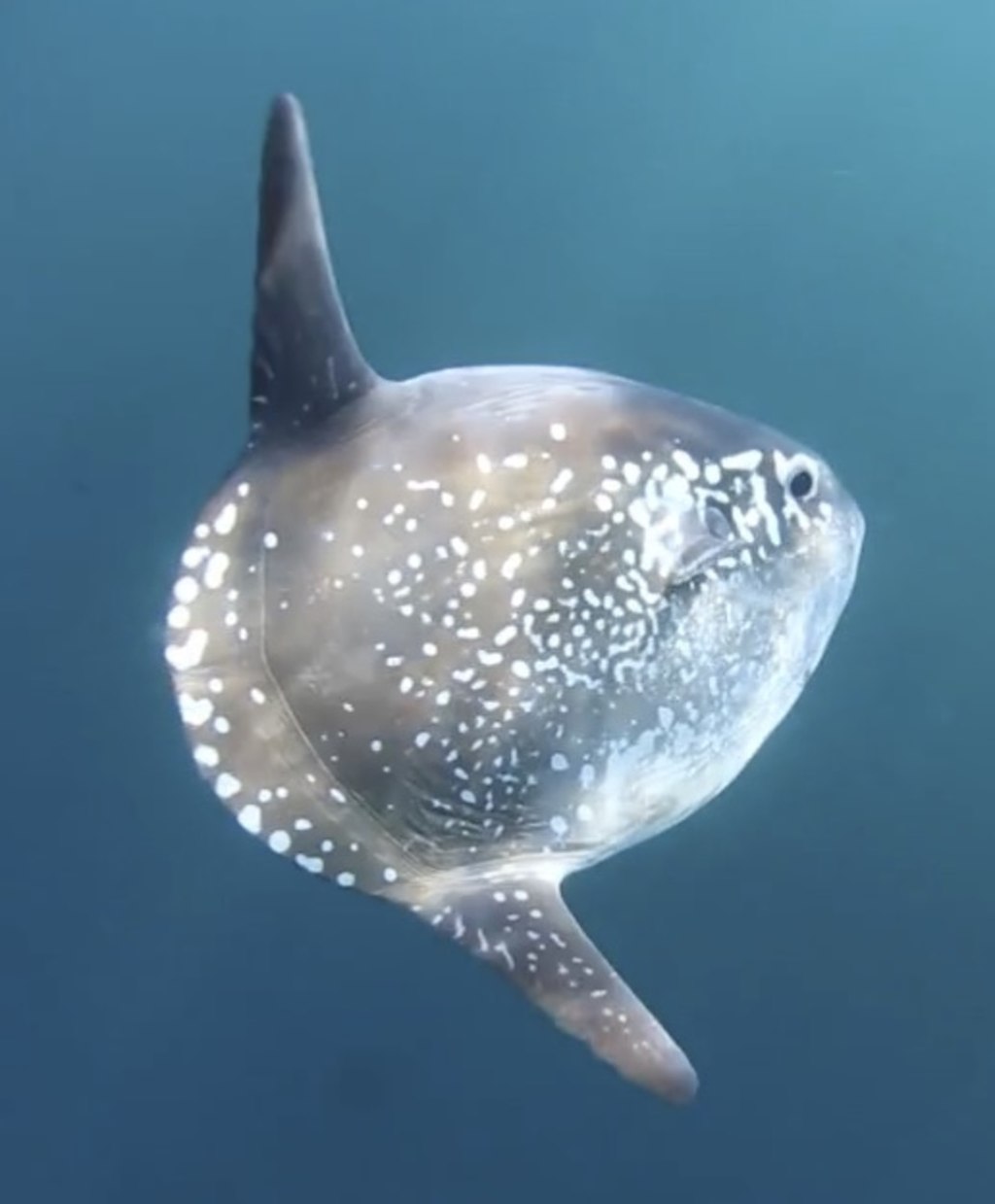A hoodwinker sunfish, once thought to live only in the Southern Hemisphere, stunned beachgoers at Doran Beach.
Over Labor Day weekend, a strange discovery on Doran Beach caught the attention of park visitors and scientists alike. What first looked like a large gray boulder on the sand turned out to be a massive, rare fish with a huge unblinking eye. The animal was alive, though barely, and attempts to push it back into the surf didn’t succeed. Within hours it died, leaving rangers and onlookers stunned. The fish was identified as a hoodwinker sunfish—one of the rarest and most recently described species in the world.
The hoodwinker, known scientifically as Mola tecta, was only officially recognized in 2017 after years of being confused with other sunfish. They grow up to nearly eight feet long and can weigh close to two tons, though their smooth body and subtle outline make them look slightly different from their better-known cousin, the ocean sunfish. Scientists first believed hoodwinkers stayed mostly in Southern Hemisphere waters around Australia, New Zealand, and South America. In recent years, though, more of these fish have been showing up in California, suggesting either a broader range or unusual shifts in ocean currents and temperature.
The Doran Beach specimen appeared to have an injury near its back fin, which may have played a role in its stranding. After its death, Sonoma County Parks contacted researchers, including marine biologists at Bodega Marine Lab. Marianne Nyegaard, the New Zealand scientist who first described Mola tecta, has requested tissue samples for study. Local scientists say each stranding is valuable, since very little is known about the species. A hoodwinker washed up on Kehoe Beach in Point Reyes in 2023, but sightings this far north are still remarkable.
For Sonoma County residents, the story is more than just a curiosity. Encounters like this remind us that the ocean at our doorstep connects directly to the vast Pacific and its mysteries. Changes in migration or health of rare creatures can be signals of larger shifts in marine ecosystems. A fish of this size washing ashore is also a call for careful documentation by the public. Good photographs, notes about the time and place, and sharing sightings with scientists through tools like iNaturalist can make a difference in understanding our coastal environment.
Seeing a creature like this on our beach is humbling. The hoodwinker sunfish may have been a rare visitor on borrowed time, but its appearance here adds a new chapter to the ongoing story of life along Sonoma’s coast. It is a reminder that the edge of the ocean is never just local—it is part of something larger, powerful, and still full of surprises.




